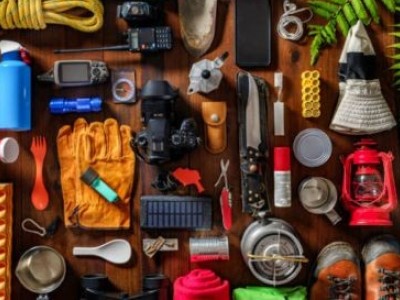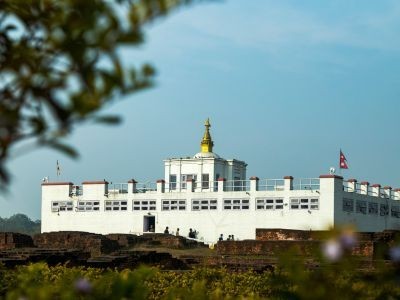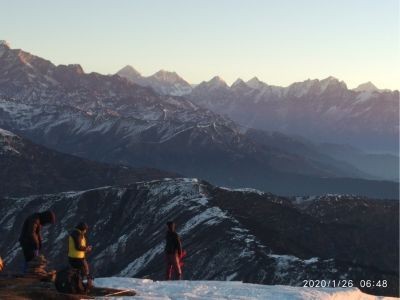Nepal's Himalayan segment furnishes diverse trekking routes but the Pikey Peak trek stands unique as it provides excellent views and cultural diversity and remains accessible to travelers. Due to its low profile the Everest region contains Pikey Peak which appeals to adventurous trekkers because it provides exceptional scenery without encountering many fellow travelers. This extensive guide will cover all essential information about trekking Pikey Peak in Nepal which includes maps of multiple available routes and necessary approvals together with expenses and appropriate visiting seasons.
Table of Contents
Why Choose Pikey Peak Trek Nepal?
More than unique characteristics distinguish the Pikey Peak trek among other options. Sir Edmund Hillary praised Pikey Peak views for presenting his most cherished sight of Mount Everest after he achieved his summit. Such an admiration showcases the incredible sights that await trekking visitors at this destination.
The short distance from the Everest region makes Pikey Peak an outstanding choice in terms of value. During the trek, you will witness extraordinary panoramic mountain views consisting of Mount Everest alongside the Himalayan peaks of Makalu, Kanchenjunga and Lhotse, and Thamserku. Walkers will find similar mountain views of well-known trekking paths, but they will experience an unspoiled panorama since the trails are not overcrowded.
Travelers of various skill levels can experience classic Himalayan scenery because the trek reaches only 4,065 meters in altitude. The Everest view trek enables people with short schedules to experience it through 5 to 7-day trips, therefore fitting for quick travelers.
The Pikey Peak trekking route enables visitors to explore genuine Sherpa villages which are mostly free from mass tourism. The genuine cultural experience on this trail has become rare since Nepal's main trekking destinations attract more visitors.
Pikey Peak Route Map and Itineraries
The route map for Pikey Peak becomes crucial for anyone who wants to develop their travel itinerary. The majority of Pikey Peak trek tours begin at Dhap or Jiri before they end at Phaplu through different trail options. Following is a comprehensive day-by-day schedule of the typical route:
Classic 6-Day Pikey Peak Trek Itinerary
Day 1 includes an 8-9 hour driving trip which takes you from Kathmandu to Dhap (2,850m). Beautiful rural Nepali scenery accompanies the winding path, which presents pleasant views of the countryside. When you arrive at Dhap, you will spend the night at a local teahouse while getting ready to begin hiking.
The 2nd trekking day leads hikers from Dhap to Jhapre, where the heights rise to 2,820 meters. Short breaks during the trail provide distant Himalayan mountain peak sightings. Located in the Himalayan slopes, Jhapre marks itself by its delightful Sherpa community and its tiny Buddhist place of worship. The walking duration for the day spans five to six hours with various slopes of moderate degree.
During Day 3 we start by walking up from Jhapre to Pikey Base Camp at an altitude of 3,640 meters through abundant forests and alpine grasslands. During your ascent through the mountain area, the panoramic vistas start to replace the lower-altitude vistas, so the scenery achieves ever-more staggering proportions. Basic teahouse facilities are available at Pikey Base Camp for travelers who reach this destination. The air of the mountains clears to reveal bright star patterns that transform the surroundings into enchanting beauty. This segment typically takes 6-7 hours.
Starting at dawn on Day 4 allows visitors to observe Pikey Peak sunrise before descending to Junbesi (2,700m) from the summit point (4,065m). It takes approximately 1-2 hours to walk from the base camp to the summit before sunrise begins. At the peak summit, you will enjoy panoramic mountain views that extend to Mount Everest along with Makalu, Kanchenjunga, and numerous additional peaks of the Himalayan range. The descent leads you to Junbesi, which stands as one of the prettiest Sherpa settlements near the area. A total of 7-8 trekking hours occupies the entire day.
The fifth day of our journey leads us from Junbesi to Phaplu at an elevation of 2,413 meters, where we stop to see the important Tibetan Buddhist center Thupten Choling Monastery. The trail leads onward to traditional villages, then through picturesque forests, which ultimately end at Phaplu. The walking distance for this section takes about 5 to 6 hours.
The journey ends by driving back to Kathmandu during 8-9 hours or flying from Phaplu's airstrip, taking about 30-40 minutes, depending on your economic situation and travel choice.
Alternative Routes
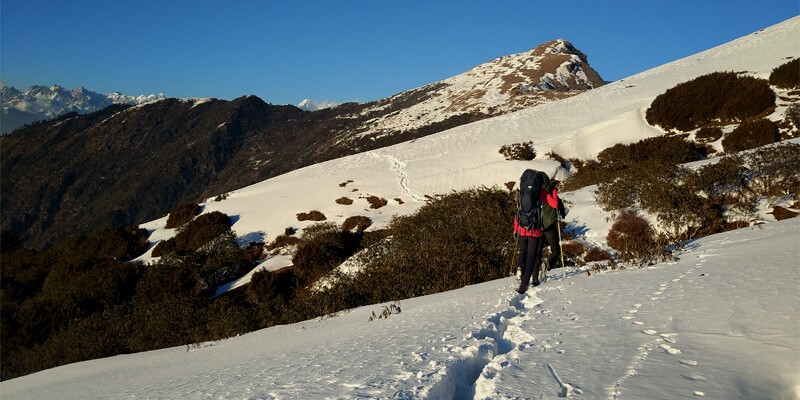
People who want a longer trek experience can start their journey from Jiri to follow the path taken by early Everest expedition groups. The detour extends the journey between 2 to 3 days yet provides controlled customization while providing supplementary cultural encounters.
Travelers can unite sections of the Everest Base Camp trek with Pikey Peak for a trip that avoids overpopulated trail sections while showing you both the mountain summit views of Pikey Peak and famous sites of the Khumbu region.
Understanding Pikey Peak Trek Costs
The trek to Pikey Peak invites travelers with various budgets because the prices remain lower than similar trails in the Everest region. The principal expenses during Pikey Peak Trekking include:
Transportation:
- Kathmandu to Dhap by public bus: USD 10-15
- The total shared cost between travelers to reach Dhap from Kathmandu by private jeep ranges between USD 150-200.
- Phaplu to Kathmandu by bus: USD 10-15
- Flight from Phaplu to Kathmandu: $130–$180
- Sharing the costs of private jeep transportation between Phaplu and Kathmandu amounts to USD 150-200, thus making the total expense affordable.
Trekking visitors can find basic lodging at teahouses near the Pikey Peak trail for USD 5 to USD 15 each night. The trekking costs increase at higher altitudes, yet they decrease when the main trekking months draw closer.
Each meal at teahouses ranges from USD 5 to USD 10. During the trekking season, the traditional food choices along the trail include Nepali staples of dal bhat with lentil soup and rice, and momos (dumplings) and noodles together with Western food items.
Guide and Porter Services:
- Licensed guide: USD 25-30 per day
- A porter can accomplish their work for between USD 15-20 daily and manage loads weighing from 15-20kg.
Miscellaneous:
- Horizon Travelers in Nepal will pay between USD 1 to USD 3 for bottled water at each altitude level.
- Hot showers: USD 2-5, where available
- Battery charging: USD 2-5 per device
- Wi-Fi: USD 3-5, where available
Budget travelers need approximately USD 300-400 for a 6-day Pikey Peak trek but mid-range travelers should budget USD 500-600 and those seeking maximum comfort with private transportation and guide and porter services will have to allocate USD 700-900.
Pikey Peak Trek Difficulty and Preparation
Many potential trekkers find Pikey Peak suitable due to its moderate challenge rating. From the highest point at 4,065 meters of Pikey Peak one can enjoy Himalayan beauty without facing dangerous levels of altitude sickness.
During each trek day, participants allocate 5-8 hours to walking and move between 10-15 kilometers while their elevational changes amount to 500-800 meters. The walking routes maintain good conditions, yet several steep segments can be encountered. People who maintain an average level of fitness will benefit from previous trekking activities, though it is not strictly necessary.
Physical Preparation
At least two months prior to your expedition, start preparing by:
- Regular cardio exercises like hiking, walking, or cycling
- Stair climbing to build leg strength
- Exercises that strengthen the core to enhance balance on uneven surfaces
- Carrying a loaded backpack during training hikes
Essential Gear for Pikey Peak Trek
While the Pikey Peak trek doesn't require technical climbing gear, proper equipment is essential:
- Good quality hiking boots (well broken-in)
- Layered clothing suitable for temperatures ranging from +20°C to -5°C
- Waterproof and windproof outer layers
- Warm hat, gloves, and thermal underwear
- Trekking poles can help alleviate knee strain on descents.
- Sleeping bag (rated to at least 0°C)
- Sun protection (hat, sunglasses, sunscreen)
- Basic first aid kit and personal medications
- Headlamp with spare batteries
- Water purification method
Pikey Peak Altitude Sickness Prevention
Even though the Pikey Peak trek reaches moderate altitudes, altitude sickness prevention remains important. The itinerary outlined above includes a gradual ascent profile, which helps with acclimatization, but additional precautions are worth taking:
- Stay properly hydrated by drinking at least 3-4 liters of water daily
- Avoid alcohol and tobacco during the trek
- Ascend carefully, using the "climb high, sleep low" strategy.
- Consider taking Diamox (acetazolamide) prophylactically after consulting with your physician
- Recognise early symptoms of altitude sickness: headache, nausea, dizziness, fatigue
- If symptoms worsen, descend immediately to a lower elevation
Remember that even the most experienced trekkers can develop altitude sickness, so never ignore the symptoms. The best treatment is always descent to a lower elevation.
Best Time to Trek Pikey Peak
Your experience during the trek through Pikey Peak depends heavily on weather factors and environmental conditions so you must select the right time for your journey. This area displays clear seasons with different opportunities and problems that affect the overall experience.
Spring (March to May)
Spring represents an ideal season to perform a trek on Pikey Peak. During daytime, the area maintains temperatures between 10-20°C, while nighttime temperatures stay between 0-10°C. As a result, the landscapes become magnificent as the forests turn into colorful explosions due to vibrant rhododendron blooms. The mountains present mostly uncluttered vistas, particularly in early morning, yet clouds might assemble throughout the afternoons.
Autumn (September to November)
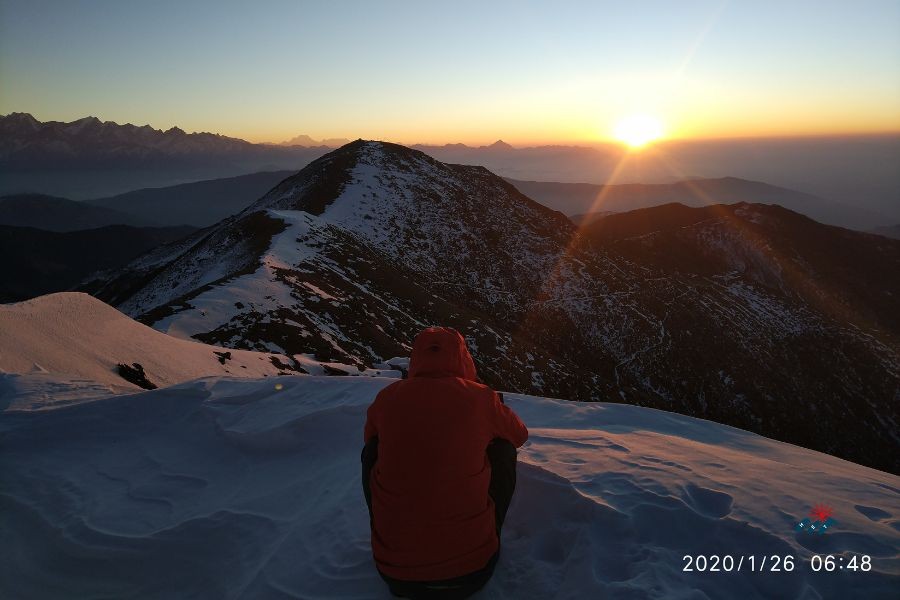
The best time of year to hike to Pikey Peak is from September to November.The monsoon rains clean the air to such a degree that mountains become exceptionally visible. The daytime temperature spans between 8 and 18°C, except during nighttime when the temperature ranges from -2 to 5°C. Terrain-friendly weather conditions during this season provide ideal backpacking conditions, along with the ideal lighting conditions suitable for taking photos.
Winter (December to February)
Throughout wintertime, when the entire area is cold, nature presents amazing mountain views alongside minimal hiker activity. Higher elevation locations experience daytime temperatures of 5–10°C and nightly temperatures of -10°C or lower. Snowfall becomes a possibility particularly when you reach Pikey Peak which turns the landscapes into a mesmerizing scene. Trekking during this season demands basic elements of extra heat-retaining clothing to complement an effective sleeping bag.
Summer/Monsoon (June to August)
A trek during these months is unsuitable since rainfalls cause dangerous trail conditions and block the sight of the mountains. Although rain may bother some people, this season presents attractive landscapes with abundant wildflowers, together with minimal trekker presence. You must bring rain protection equipment because unpredictable weather can force Phaplu airport to cancel flights.
Pikey Peak Accommodation Options
It's essential to accommodate lodging options when organizing your Pikey Peak hike. Unlike more developed trekking routes, the facilities along this trail are basic but comfortable.
Teahouses and Lodges
The primary accommodation along the Pikey Peak trekking route consists of family-run teahouses and simple lodges. These typically offer:
- Basic rooms with twin beds and minimal furnishings
- Shared bathrooms (some newer establishments may have attached bathrooms)
- Common dining areas that serve as social gathering spots
- Simple but hearty meals prepared from locally sourced ingredients
The standard of accommodation varies, with more basic facilities in remote areas and slightly better options in larger villages like Junbesi and Phaplu. Rooms generally cost between USD 5-15 per night, with prices sometimes waived if you commit to eating meals at the establishment.
Homestays
Local families operate home accommodation programs in villages that lie along the traveling path. Traditional homestays offer a personal cultural experience where you can experience the everyday activities of the Sherpa people. Traditional living conditions in homestays are basic but neat, with sincere hosting that makes up for minimal modern comforts.
Camping
The camping alternative exists for self-sufficient trekkers who choose the route since teahouses are available throughout. Using this travel method entails an increased load of supplies and demands setup for guide and porter teams to assist the journey.
Electricity and Connectivity
Due to power outages, lodges in this area generally have electricity systems in place. The facilities provide customers with battery charging services, which they need to pay for. Users can access Wi-Fi connections in bigger villages, yet usually experience slow and unstable connection speeds. The mobile network has started to expand and provides better connectivity in Jhapre, Junbesi, and Phaplu.
Pikey Peak Local Culture Experience
A fundamental feature about hiking up to Pikey Peak appreciates genuine cultural encounters with local communities. The trekking path runs through Sherpa settlement zones, together with Tamang and Rai ethnic residential areas.
Sherpa Culture and Traditions
The Sherpas, famous for their mountaineering skills, have a rich cultural heritage deeply influenced by Tibetan Buddhism. You'll observe as you hike through their villages:
- Prayer flags fluttering from houses, ridges, and mountain passes
- Mani walls are made of stone and have Buddhist prayers engraved on them.
- Chortens and stupas mark important religious sites
- Tibetan lunar calendar-based local celebrations
The opportunity to interact with Sherpa families provides insights into their traditional way of life, which has remained relatively unchanged for generations despite the encroachment of modern influences.
Monasteries Along the Route
The Pikey Peak trek includes visits to significant Buddhist monasteries:
Thupten Choling Monastery: Located near Junbesi, this important monastery houses hundreds of monks and nuns. Founded by Tibetan refugees, it maintains traditional Tibetan Buddhist practices and architecture.
Junbesi Monastery: This smaller but historically significant monastery offers a glimpse into local religious practices and occasionally hosts traditional ceremonies that visitors may be invited to observe.
Local Cuisine
One of the highlights of the cultural experience is getting to sample real Sherpa food.Traditional dishes include:
- Sherpa stew (a hearty mixture of vegetables, meat, and potatoes)
- Tsampa (roasted barley flour, a staple food)
- Tibetan bread, frequently eaten with jam or honey for breakfast
- Butter tea (a salty tea mixed with yak butter)
- Chang is a somewhat alcoholic fermented grain beverage.
Many teahouses offer these local specialties alongside more familiar trekking fare like dal bhat (rice with lentil soup) and momos (dumplings).
Pikey Peak vs Everest Base Camp Trek
Many travelers find themselves deciding between the iconic Everest Base Camp (EBC) trek and the less-known Pikey Peak trek. Understanding the key differences helps in making an informed choice based on your preferences and constraints.
Duration and Distance
The Pikey Peak hike, which covers 40–50 kilometers, usually takes 5-7 days to finish. The EBC journey, on the other hand, takes 12–14 days and covers roughly 130 kilometers.This significant difference makes Pikey Peak more accessible for those with limited vacation time.
Altitude and Difficulty
While both are considered Everest region treks, they reach different maximum altitudes:
- Pikey Peak: 4,065 meters at the summit
- Everest Base Camp: 5,364 meters (5,545 meters at Kala Patthar viewpoint) EBC Trek
This difference of over 1,300 meters has substantial implications for altitude sickness risk and overall trek difficulty. The Pikey Peak trek's moderate altitude makes it suitable for a wider range of fitness levels and reduces acclimatization requirements.
Crowds and Authenticity
The EBC trek hosts thousands of trekkers annually, particularly during peak seasons, leading to busy trails and teahouses.The Pikey Peak trip, on the other hand, is still comparatively uncrowded, providing a more tranquil experience and genuine encounters with local people that are less impacted by mass tourism.
Cost Comparison
The shorter duration and lower logistical requirements make the Pikey Peak trek significantly more affordable:
- Pikey Peak Trek: USD 300-900 (depending on comfort level)
- EBC Trek: $1,200–$2,500 (without including extra expenses for specialized equipment)
Views and Landscapes
Both treks offer spectacular mountain views, but from different perspectives:
- Pikey Peak provides panoramic views of the entire Himalayan range, including Everest, Makalu, and Kanchenjunga from a distance
- EBC trek offers closer, more intimate views of Everest and surrounding peaks as you approach the base of the mountain
Interestingly, some trekkers find the views from Pikey Peak more photogenic due to the perspective that highlights Everest's distinctive pyramid shape against the backdrop of other mountains.
Accessibility
Different starting points become available for the Pikey Peak trek because travelers can choose between Dhap and Jiri and Phaplu as entry points. The EBC trek starts from Lukla by flight, yet this airport experiences numerous flight cancellations and delays due to weather.
Conclusion
The Pikey Peak trek brings together unmatchable sightseeing of Himalayan peaks with cultural exploration and convenient starting points. The trek through the Everest region takes you through short distances that let you experience Nepal's mountains like a local without requiring strenuous Base Camp demands or lengthy commitments.
Novice adventurers wishing to start their Himalayan journey can find memorable experiences at Pikey Peak alongside experienced mountaineers who wish to see their familiar peaks from new angles. What makes Pikey Peak a top attraction in Nepal is its blend of reasonable hiking challenges along with its abundant cultural treasures and breathtaking topographies.
International trekkers should visit Pikey Peak during this period of unrecognized popularity because the mountain will draw more tourists in the future. The Pikey Peak path goes beyond a basic mountain trek because it enables you to meet both the Himalayas' grandeur as well as their hospitable residents.
FAQs
How physically fit do I need to be for the Pikey Peak trek?
Moderate fitness is sufficient for this trek. Regular exercise for 4-6 weeks before your trip, focusing on cardio and leg strength, will help ensure an enjoyable experience.
Does the Pikey Peak trek require a guide?
While not legally required, a guide is highly recommended, especially for first-time trekkers in Nepal. Local guides enhance safety, provide cultural insights, and support the local economy.
What is the food like on the Pikey Peak trek?
Teahouses serve a combination of Nepali, Tibetan, and basic Western dishes. Dal bhat (rice with lentil soup) is a trekking staple that offers unlimited refills. Vegetarian options are widely available.
Can I trek Pikey Peak solo?
Solo trekking is possible as the route is relatively straightforward and passes through villages with regular accommodation options. However, for safety and a richer experience, trekking with a guide or in a group is advisable.
How does Pikey Peak compare to other short treks in Nepal?
Compared to other short treks like Poon Hill or Mardi Himal, Pikey Peak offers less crowded trails and more authentic cultural experiences while still providing spectacular mountain views.
Does the Pikey Peak trekking route have ATMs?
No reliable ATM services exist along the route. Carry sufficient Nepali rupees for the entire trek, plus extra for emergencies.
What type of insurance do I need for Pikey Peak trekking?
Comprehensive travel insurance that specifically covers trekking activities up to 4,500 meters, helicopter evacuation, and medical expenses is essential.
Is it possible for me to charge my electronics while trekking?
Most teahouses offer charging facilities for an additional fee (USD 2-5 per device). Solar chargers are a good backup option.
Is drinking water available along the route?
Teahouses sell bottled water, but to reduce plastic waste, consider bringing water purification tablets, a UV purifier, or a filtering water bottle.
What should I pack for the Pikey Peak trek that people often forget?
Commonly forgotten essential items include toilet paper, a quick-dry towel, lip balm with SPF, blister treatment, a reusable water bottle, and a comfortable sleep mask for early sunrise in mountain teahouses.
